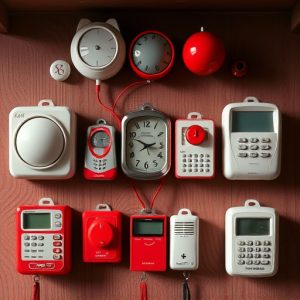Personal Safety Devices for College Students: Stay Secure on Campus
College students living on campus or in urban areas face unique personal safety challenges. Personal…….
College students living on campus or in urban areas face unique personal safety challenges. Personal Safety Devices for College offer advanced features like GPS tracking, panic buttons, and emergency communication, enhancing situational awareness and security. These devices range from alarms to smartwatches with AI and facial recognition technology, suiting every budget. Effective use involves keeping devices accessible, integrating them into daily routines, and fostering peer safety awareness through tips and drills. Combining these devices with proactive strategies like vigilance, knowledge of emergency procedures, and open communication creates a safer campus experience.
Personal safety is a paramount concern for college students, especially as they navigate new environments and potentially isolated situations. With rising concerns about campus safety, understanding and implementing personal safety measures become crucial. This article explores the importance of personal safety for college students and delves into various types of devices designed to enhance security. We provide practical tips on effective device usage and additional strategies to foster a safer campus community, focusing on empowering individuals with tools for their well-being.
- Understanding the Importance of Personal Safety for College Students
- Types of Personal Safety Devices Available
- Implementing and Using Personal Safety Devices Effectively
- Additional Tips for Enhancing Campus Safety Beyond Devices
Understanding the Importance of Personal Safety for College Students
College students, especially those living on campus or navigating urban areas after dark, face unique challenges when it comes to personal safety. In today’s digital era, where concerns about security are increasingly prevalent, equipping oneself with personal safety devices becomes a crucial step towards safeguarding one’s well-being. Personal safety devices for college students serve as a vital tool in fostering independence and peace of mind.
These devices go beyond simple alarm systems; they often include GPS tracking, panic buttons, and emergency communication features designed to provide immediate assistance during emergencies. By integrating such technologies into their daily routines, students can enhance their situational awareness and feel more secure while exploring new environments, whether it’s attending late-night study sessions or walking back to campus after an event.
Types of Personal Safety Devices Available
Personal Safety Devices for College students come in various forms, each designed to offer different levels of protection and peace of mind. From compact personal alarms that emit loud sounds to deter potential attackers, to GPS-enabled trackers that allow friends and family to monitor a student’s location, there’s an option for every need and budget. Smartwatches with panic buttons and apps that can automatically alert emergency services are also gaining popularity among college students. These devices offer not just audible warnings but also silent alerts, ensuring help arrives even if the wearer is unable to speak or call out.
Additionally, personal safety lights and reflective accessories like bags and stickers can make students more visible in low-light conditions, enhancing their safety while walking on campus at night. Some innovative products even incorporate AI and facial recognition technology for advanced security features, such as identifying known threats or checking ID credentials. These diverse Personal Safety Devices for College students aim to empower young people with the tools they need to feel safer during their academic journey.
Implementing and Using Personal Safety Devices Effectively
Implementing personal safety devices can significantly enhance college students’ security while navigating campus life, especially in today’s digital era where awareness of potential risks is paramount. These devices are designed to provide an extra layer of protection and offer peace of mind for both individuals and their families. One of the most effective ways to utilize these tools is by ensuring they are readily accessible and integrated into daily routines. For instance, attaching a personal safety alarm to one’s backpack or keeping it within easy reach during walks can make it an instinctive response when facing unsafe situations.
College students should be encouraged to familiarize themselves with the features of their chosen devices, such as panic buttons, GPS tracking, and emergency contact options. Regular practice drills can help turn these tools into automatic responses during distressing scenarios. Additionally, sharing usage tips and best practices within peer groups can foster a culture of safety awareness, making campus communities more responsive and prepared to handle emergencies effectively.
Additional Tips for Enhancing Campus Safety Beyond Devices
Beyond investing in personal safety devices like alarms, college students can further enhance their campus safety by adopting a few simple yet effective strategies. One crucial tip is to stay aware and vigilant at all times. Being mindful of your surroundings, especially in poorly lit or secluded areas, can deter potential threats. Regularly familiarizing yourself with emergency procedures and contact numbers is another vital step; knowing how to respond swiftly during an incident can make a significant difference.
Additionally, fostering open communication within the student community can create a safer environment. Encouraging classmates to look out for one another and reporting any suspicious activities or individuals promotes a culture of vigilance. Utilizing campus safety apps that allow users to instantly alert authorities about potential hazards is also worth considering as part of your personal safety plan. These additional measures, combined with the right Personal Safety Devices for College, can contribute to a more secure academic experience.
Personal safety alarms are valuable tools for college students, offering peace of mind and enhanced security on campus. By understanding the importance of personal safety and choosing the right devices, students can actively contribute to creating a safer environment. Implementing these devices effectively, along with adopting additional safety practices, ensures a more secure experience during their academic journey. For college students, being prepared and informed is key to navigating any potential risks while enjoying all that higher education has to offer.

